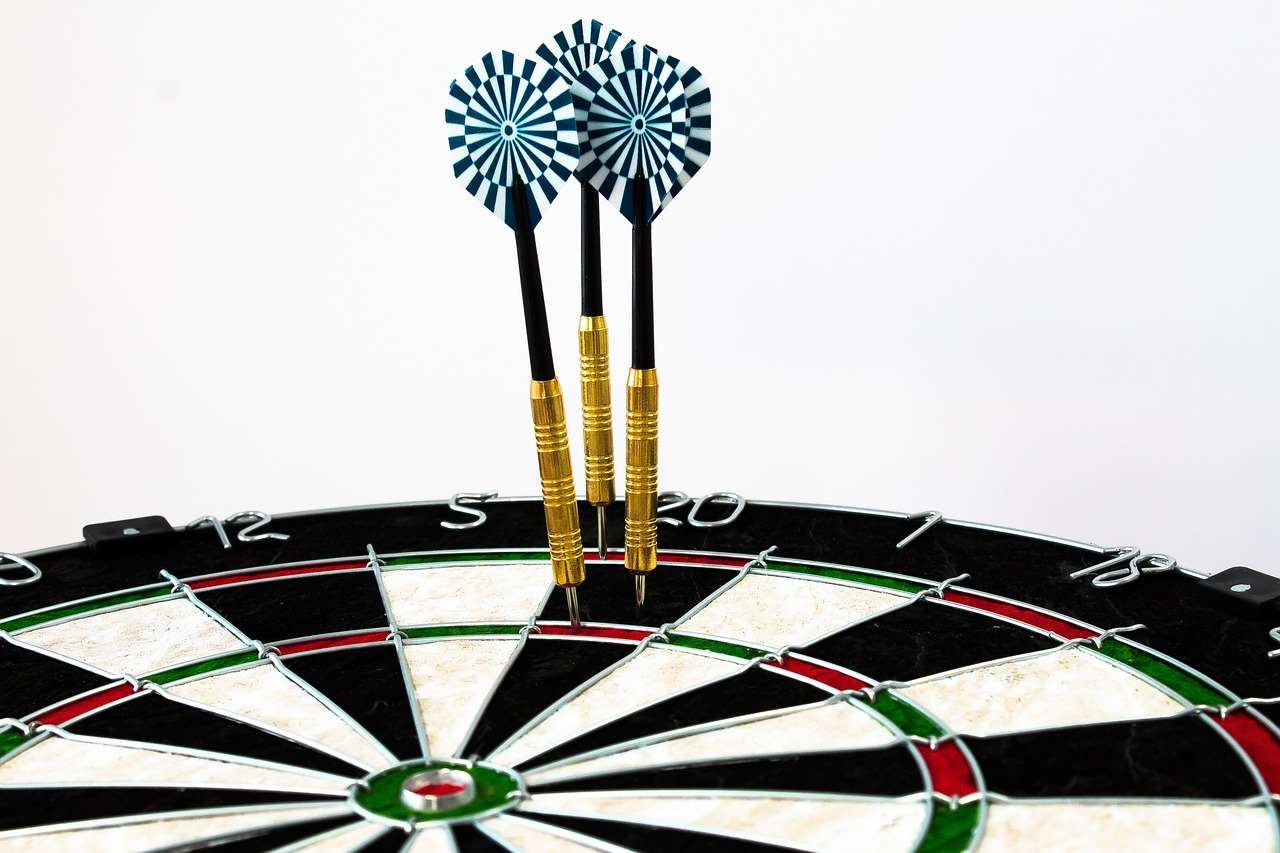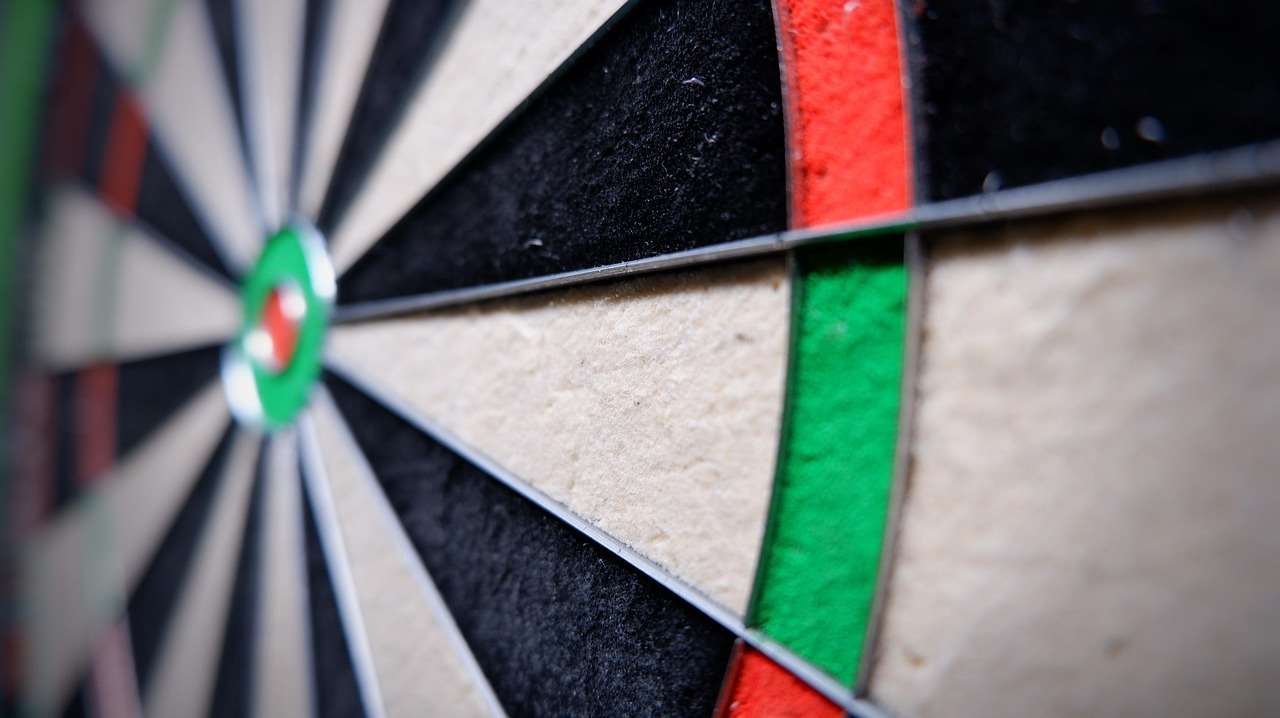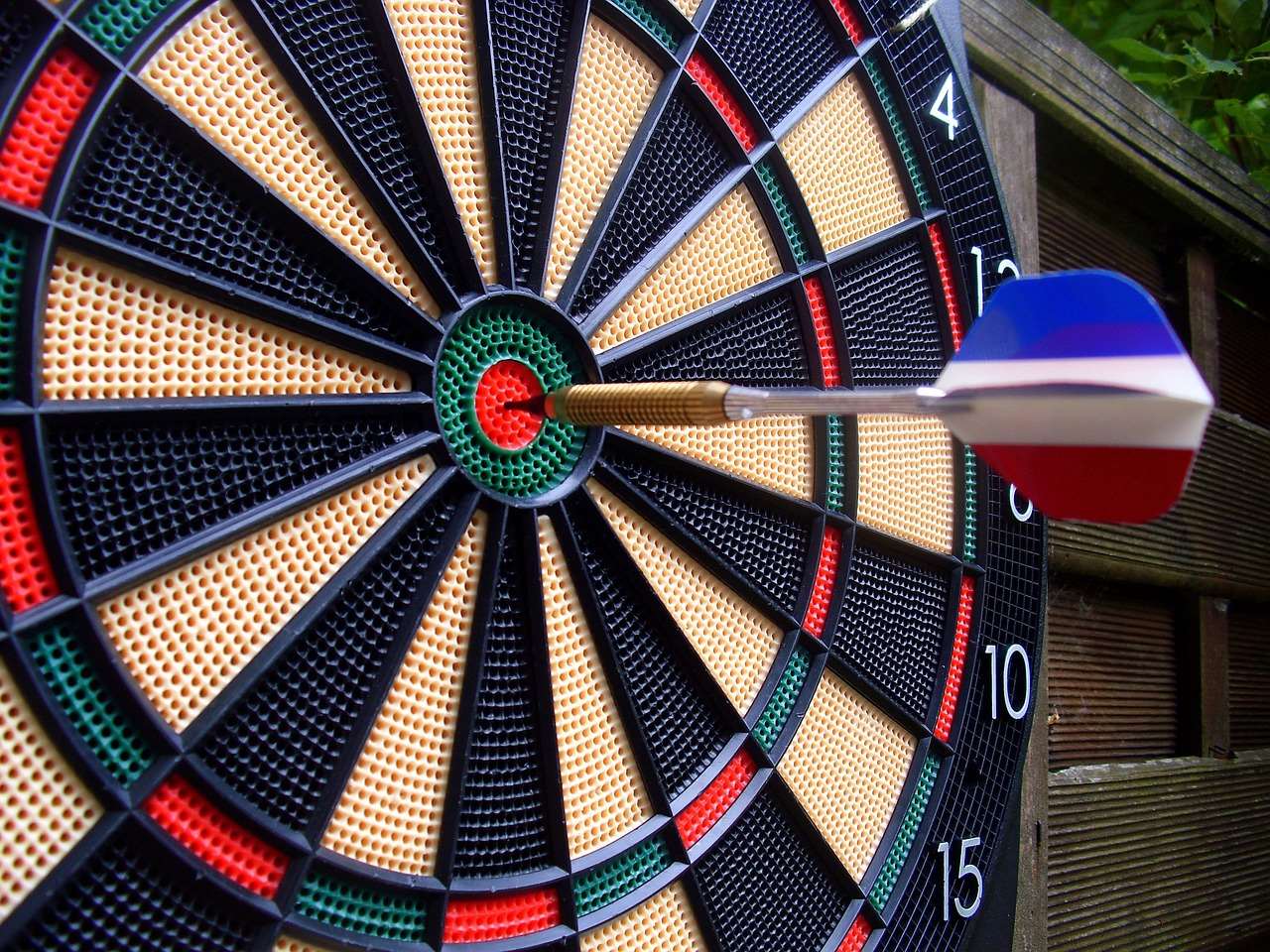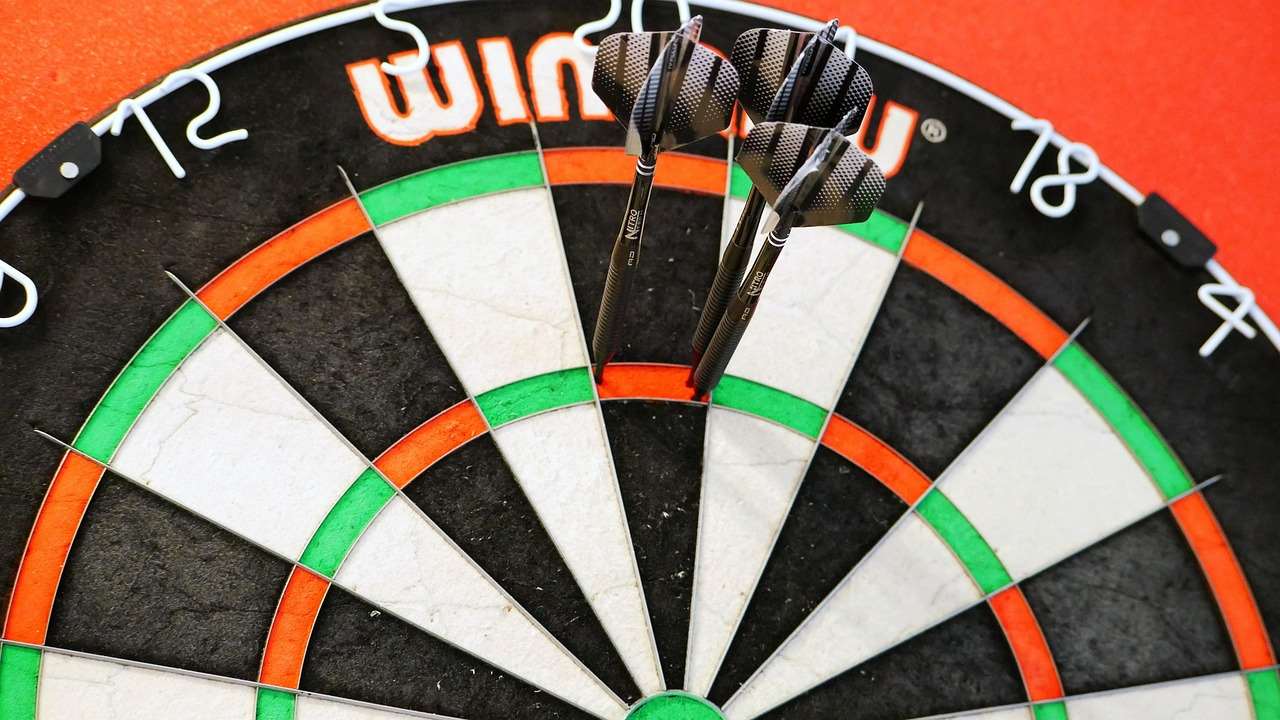Before stepping up to the oche, a focused mind is as crucial as a steady hand; the **Around the Clock: mental checklist before throwing** ensures consistent performance and helps eliminate costly errors. This article explores the elements of that checklist, encompassing stance, grip, aim, and mental fortitude, equipping you with the tools to elevate your dart game.
⚠️ Still Using Pen & Paper (or a Chalkboard)?! ⚠️
Step into the future! The Dart Counter App handles all the scoring, suggests checkouts, and tracks your stats automatically. It's easier than you think!
Try the Smart Dart Counter App FREE!Ready for an upgrade? Click above!
The Foundation: Stance and Balance
Your stance is the bedrock of your throw. It dictates your stability, balance, and ultimately, your ability to consistently repeat your motion. Before each throw, take a moment to assess your stance. Are your feet planted firmly? Is your weight distributed evenly? Are you facing the board correctly?
- Foot Placement: Most players favor a slightly angled stance with their dominant foot forward. Experiment to find what feels most natural and allows for a smooth transfer of weight.
- Balance: Avoid leaning too far forward or backward. Aim for a balanced posture that feels grounded and stable. You should feel comfortable holding this position for an extended period.
- Consistency: The key is to replicate your stance for every throw. Subtle variations can lead to inconsistent results. Make a conscious effort to maintain the same foot placement and weight distribution each time.
Remember, a solid foundation allows for a more fluid and accurate throw. Mastering your stance is the first step in building a reliable dart game. Improving your skills in the basics may require looking at Basic Darts Fundamentals for Beginners.

Grip and Dart Handling
The grip is your direct connection to the dart, influencing your control and release. A proper grip should be firm enough to maintain control but relaxed enough to avoid tension. Before each throw, focus on the following:
- Pressure: Avoid gripping the dart too tightly. A death grip restricts your wrist movement and leads to erratic throws. Experiment with different levels of pressure to find the sweet spot.
- Finger Placement: Most players use three or four fingers to grip the dart. The exact placement is a matter of personal preference, but ensure your fingers are evenly distributed around the barrel.
- Consistency: As with your stance, consistency is crucial. Use the same grip for every throw to maintain a consistent release point.
Experimentation is key to finding the grip that works best for you. Consider trying different dart weights and barrel shapes to optimize your control. Make sure you aren’t trying a death grip, as that can be detrimental to the accuracy of your throw.
Aiming and Target Visualization
Aiming involves aligning your eye, dart, and target. It requires focus, concentration, and a clear understanding of your throwing trajectory. Before each throw, consider these points:
- Eye Alignment: Ensure your dominant eye is directly aligned with the target. This may require adjusting your head position slightly.
- Target Selection: Clearly visualize the target you are aiming for. Focus on a specific point within the target area, rather than the entire target itself.
- Mental Trajectory: Imagine the path the dart will take from your hand to the target. This helps to refine your aim and improve your accuracy.
Practice visualizing your throws and consistently aiming at the same point to develop muscle memory and improve your accuracy. You might consider Adapting darts rules for small spaces: tips and tricks to allow for more targeted practice.

The Throwing Motion: Smoothness and Follow-Through
The throwing motion should be a fluid, continuous movement, originating from the elbow and extending through the wrist. Avoid jerky or abrupt movements, which can disrupt your accuracy. The follow-through is just as important as the initial motion. Before each throw, think about the following:
- Elbow Position: Keep your elbow stable and close to your body. Avoid excessive sideways movement, which can throw off your aim.
- Wrist Flick: Utilize a smooth wrist flick to impart spin and momentum to the dart. This helps to stabilize the dart in flight and improve its accuracy.
- Follow-Through: Extend your arm fully towards the target after releasing the dart. This ensures a complete and consistent throwing motion.
Practice your throwing motion repeatedly, focusing on smoothness, consistency, and a complete follow-through. Record yourself throwing and analyze your technique to identify any areas for improvement. When playing with mixed level dart players, try Modifying rules for mixed-level dart players to ensure more competitiveness in games.
Around the Clock: Mental Checklist Before Throwing – Building Mental Fortitude
More than just mechanics, **Around the Clock: mental checklist before throwing** also includes mental preparation. Darts is a game of precision and focus, requiring a strong mental game to perform consistently under pressure. Before each throw, take a moment to:
- Clear Your Mind: Eliminate distractions and negative thoughts. Focus solely on the task at hand – the upcoming throw.
- Visualize Success: Imagine yourself hitting the target. This helps to build confidence and improve your mental focus.
- Manage Pressure: Recognize that pressure is a natural part of the game. Learn to manage your emotions and avoid letting them affect your throw.
Develop strategies for managing pressure and maintaining focus. Some players find it helpful to take deep breaths or repeat a mantra before each throw. A strong mental game is essential for achieving consistent success in darts. You can create additional excitement by looking at Fun dart game variations with modified rules.
Dealing with Tilt and Staying Consistent
“Tilt,” or getting emotionally frustrated and throwing erratically, is the bane of many dart players. If you find yourself in this state, the **mental checklist** becomes even more critical. Here’s how to combat tilt:
- Acknowledge the Problem: The first step is recognizing that you’re tilting. Don’t ignore it; address it head-on.
- Step Away Briefly: Take a short break from the game. Get a drink of water, stretch, or simply clear your head.
- Refocus on Fundamentals: Return to the basics. Concentrate on your stance, grip, and throwing motion, rather than the outcome of the throw.
- Lower Your Expectations: Accept that you’re not going to throw perfectly every time. Focus on making consistent throws, even if they’re not always bullseyes.
Consistency is key in darts. It’s not about hitting the perfect shot every time, but about minimizing errors and maintaining a consistent level of performance. Focus on the process, not just the result, and you’ll be well on your way to achieving your darting goals.
The Importance of Posture and Breathing
Often overlooked, posture and breathing play significant roles in your darting performance. Before you throw, actively consider these elements:
- Upright Posture: Maintaining a straight and upright posture is important for balance and control. Avoid slouching or hunching over the oche.
- Deep Breathing: Take a few deep breaths before each throw to calm your nerves and improve your focus. Exhale slowly as you begin your throwing motion.
- Relaxation: Tension is the enemy of accuracy. Consciously relax your shoulders, arms, and hands to allow for a smoother and more fluid throw.

These seemingly small details can have a significant impact on your overall performance. Incorporate them into your pre-throw routine to enhance your consistency and accuracy. If you play with others, remember that you can also try Creative dart rules for parties and social gatherings.
Fine-Tuning Your Dart Setup
Your dart setup – the specific combination of barrel, shaft, and flight – can significantly influence your throwing style and accuracy. Experiment with different setups to find what works best for you. Before a serious game, ensure:
- Dart Weight: Consider dart weight based on your personal strength and throwing style. Try different weights to see what feels most comfortable.
- Shaft Length: Adjust shaft length to modify the dart’s flight path. Shorter shafts generally result in a flatter trajectory, while longer shafts produce a more arcing flight.
- Flight Shape: Experiment with different flight shapes to optimize the dart’s stability and accuracy. Larger flights provide more stability, while smaller flights offer less drag.
Take the time to experiment with different setups and find the combination that feels most natural and allows you to throw consistently. Remember, what works for one player may not work for another.

Conclusion: Mastering Your Pre-Throw Routine
Developing a consistent pre-throw routine, including a meticulous **Around the Clock: mental checklist before throwing**, is essential for maximizing your darting potential. By focusing on your stance, grip, aim, throwing motion, and mental state, you can build a solid foundation for consistent and accurate throws. Remember to stay patient, practice regularly, and continually refine your technique. By integrating these strategies, you’ll significantly improve your game and enjoy the journey of becoming a more skilled dart player. Now, step up to the oche, put your checklist into action, and hit that bullseye! Consider reviewing Simplified 501 game rules for novice players.
Hi, I’m Dieter, and I created Dartcounter (Dartcounterapp.com). My motivation wasn’t being a darts expert – quite the opposite! When I first started playing, I loved the game but found keeping accurate scores and tracking stats difficult and distracting.
I figured I couldn’t be the only one struggling with this. So, I decided to build a solution: an easy-to-use application that everyone, no matter their experience level, could use to manage scoring effortlessly.
My goal for Dartcounter was simple: let the app handle the numbers – the scoring, the averages, the stats, even checkout suggestions – so players could focus purely on their throw and enjoying the game. It began as a way to solve my own beginner’s problem, and I’m thrilled it has grown into a helpful tool for the wider darts community.